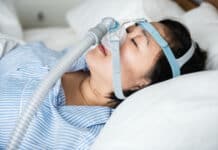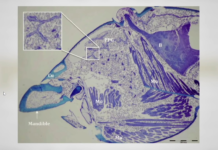Table of Contents
What is Diabetic Ketoacidosis (DKA)?
Diabetic Ketoacidosis (DKA) is a serious complication that can affect people with diabetes, particularly those with type 1 diabetes. It occurs when the body produces an excessive amount of ketones, substances produced in the liver when blood sugar levels are too high and the body doesn’t produce enough insulin to break them down.
In most cases, DKA develops as a result of uncontrolled diabetes, but can also be caused by infection or other metabolic disorders. It can be treated with insulin therapy, intravenous fluids, electrolytes, and monitoring of glucose levels.
Symptoms of Diabetic Ketoacidosis
The common symptoms of DKA include: extreme thirst, frequent urination, nausea and vomiting, rapid breathing, abdominal pain, confusion, and fruity smelling breath. If these symptoms are present, it is important to seek medical attention right away as DKA can be life-threatening if left untreated.
Causes of DKA
Diabetic ketoacidosis (DKA) is a serious complication of diabetes that happens when the body’s cells are not able to get the glucose they need for energy. As a result, the body starts to burn fat for energy instead. This creates a buildup of acids called ketones in the blood.
The primary cause of DKA is uncontrolled blood sugar levels. When blood sugar levels stay high for an extended period of time, the body may be unable to cope and eventually start breaking down fat for energy instead. This process creates the ketones which can lead to DKA.
Other causes of DKA include infection or illness, other metabolic disorders, and certain medications. For instance, if a person with diabetes has a cold or flu virus, the infection can make it more difficult to control their diabetes. Certain medications, such as steroid medications, can also raise the risk of developing DKA.
Infection or Illness
One of the causes of diabetic ketoacidosis (DKA) is an infection or illness. For people living with diabetes, this can be anything from a cold to more serious illnesses such as pneumonia or urinary tract infections that have yet to be discovered. These infections or illnesses can cause the body to produce hormones which increase the levels of glucose in the blood and make it difficult for the body to use the insulin effectively.
When your body has difficulty using insulin, the glucose stays in the bloodstream and is unable to move into cells where it is needed for energy. This results in high levels of glucose in the blood, which in turn leads to the production of ketones, causing DKA.
Other metabolic disorders
In some cases, other metabolic disorders such as pancreatitis, alcohol abuse, or stress can cause Diabetic Ketoacidosis (DKA). Pancreatitis is a condition where the pancreas becomes inflamed and prevents the body from producing enough insulin. Alcohol consumption can also interfere with blood sugar levels, often leading to DKA. Lastly, stressful situations can result in increased hormones that make it difficult for the body to use insulin.
Each of these factors may lead to higher blood sugar levels and an increase in ketones, which can lead to DKA if left untreated.
Certain Medications
In certain cases, medication can increase the risk of developing DKA. Some medications can cause a decrease in insulin or an increase in the amount of sugar produced by the liver. This can lead to high blood sugar levels and potentially DKA. Examples of such medications include steroids for asthma or arthritis, some diuretics, and certain antipsychotic drugs.
It's important to keep in mind that while these medications can contribute to the development of DKA, they are often necessary and valuable for treating other medical conditions. If you are taking medication that could potentially increase your risk of DKA, work closely with your doctor to ensure you are monitoring your blood sugar levels appropriately.
Diagnosing Diabetic Ketoacidosis
When diagnosing DKA, doctors will typically run a few tests to check for levels of acid in your blood and urine. This can help them understand the severity of your DKA.
Typically, they will first do a physical checkup and take your medical history. After, they may perform a variety of tests that include:
- Blood and urine tests to measure the levels of glucose, ketones and electrolytes in the body.
- A breath sample to measure the amount of ketones in the person's breath.
- A glucose test to confirm a diagnosis of diabetes.
These tests are used to measure the levels of ketones and acids in your blood and urine, as well as the amount of sugar in your glucose levels. The results from these different tests will help the doctor determine the severity of your diabetic ketoacidosis and what treatment you need.
Breath Sample
As part of diagnosing Diabetic Ketoacidosis (DKA), a breath sample may be taken. This is done by blowing into a specialized machine or having a healthcare provider take a sample of your breath. This test measures the amount of ketones in your breath. Ketones are normally produced whenever the body breaks down fat for energy, as it can occur with high or low blood sugar levels. The result of the breath sample helps healthcare professionals determine whether the person has DKA.
Glucose Test
A glucose test is a type of blood test used to diagnose diabetic ketoacidosis (DKA). Most commonly, this test is used to measure the amount of glucose in someone's blood. The test results can indicate if the person has elevated or low levels of diabetes-related ketones in their body.
A doctor will typically order a glucose test to confirm DKA in someone who is showing signs and symptoms of the condition. Depending on the magnitude of the results, they may draw further conclusions as to whether someone is in need of immediate medical treatment.
The glucose test is done by drawing blood from a vein in the arm and can be done either at home or in a clinical setting. This test is usually done with a finger-prick device, which allows doctors to measure glucose levels quickly.
Complications of Diabetic Ketoacidosis
Diabetic Ketoacidosis (DKA) is a serious condition caused by high blood sugar levels, which can result in dangerous complications if not treated. Complications of DKA may include hypoglycemia, cerebral edema, and even renal failure.
Hypoglycemia
Hypoglycemia is a potentially dangerous complication of diabetic ketoacidosis. It occurs when the level of blood sugar (glucose) drops too low, and can lead to confusion, seizures, loss of consciousness, and even death.
A person with DKA is at an increased risk of hypoglycemia because of the levels of insulin they are typically given to treat DKA. When the hormone insulin is released into the bloodstream, the body will naturally use up glucose. In the case of someone with DKA, the amount of insulin given is often more than what the body needs, resulting in a drop in blood sugar.
It is important to be aware of the signs of hypoglycemia, which include shakiness, dizziness, sweating, headache, hunger, blurred vision, and fatigue. If you notice any of these symptoms, it is important to seek medical attention as soon as possible.
Cerebral Edema
Cerebral edema is a serious complication of Diabetic Ketoacidosis (DKA). It occurs when there is excess fluid in the brain. It can happen when glucose levels remain high for a long time, and particularly if DKA is not treated quickly and properly.
The symptoms of cerebral edema include: confusion, drowsiness, headache, nausea, blurred vision, seizures, and coma. If left untreated, it can cause brain damage or even death.
If cerebral edema is suspected, medical attention should be sought immediately. Treatment typically consists of intravenous fluids and insulin replacement therapy, as well as close monitoring of blood glucose levels.
Renal Failure
Diabetic Ketoacidosis can result in a severe complication known as renal failure. This is when the kidneys cannot filter waste or excess fluid from the body properly. Symptoms of this can include swelling, nausea, vomiting, and confusion. This condition is very dangerous and requires urgent medical attention.
Renal failure can be caused by either a decrease in the blood flow to the kidneys, or by damage to the kidneys themselves. In cases of DKA, it can be caused by both. High glucose levels can damage the kidneys over time, which can lead to decreased kidney function and eventually renal failure.
If renal failure is left untreated, it can result in further complications such as electrolyte imbalance, acid-base imbalance, and fluid overload. It can even lead to death if left untreated. It is important to seek medical help as soon as possible if you think you may be suffering from renal failure.
DKA Treatment
Diabetic Ketoacidosis (DKA) is a serious medical condition that requires timely and specialized treatment. Accurately diagnosing DKA and beginning treatment as soon as possible is critical for preventing long-term complications and potentially life-threatening emergencies. Treatment typically involves intravenous fluids, insulin therapy, electrolytes, and monitoring of blood glucose levels.
Intravenous fluids are needed to replace those lost during vomiting and urination. Insulin therapy will help bring down high blood sugar levels and help the body convert fat and proteins into energy instead of ketones. Electrolytes such as sodium and potassium can be given to replace any lost during dehydration and to balance acidity levels in the body. Finally, regular blood glucose checks are essential to monitor progress and adjust the treatment plan as needed.
Additionally, patients should be closely monitored for any signs of hypoglycemia, cerebral edema, or renal failure, as these are potential complications of DKA. If any of these symptoms arise, it is important to contact medical professionals immediately for additional care and treatment options.
Intravenous Fluids
If you are diagnosed with diabetic ketoacidosis (DKA), your doctor will recommend intravenous fluid therapy to replace the lost fluids in your body. Intravenous fluids are a safe and effective way to help your body recover from DKA.
During intravenous fluid therapy, a tube is inserted into a vein in your arm or leg. The tube is connected to a bag of fluids that will be slowly administered to your body. These fluids contain sugar, electrolytes, and other essential nutrients that your body needs for hydration and energy.
The goal of the therapy is to restore the right balance of fluids, nutrients, and electrolytes in your body. Intravenous fluids can also help clear excess acid from your bloodstream.
Your doctor may also add insulin to your intravenous fluid therapy to help reduce your blood sugar levels. This will reduce the production of ketones and help your body return to a healthy balance.
Insulin Therapy
Insulin therapy is commonly used as part of the treatment for DKA. Insulin is a hormone produced naturally by the body to help manage blood glucose levels. When someone has DKA, their body may not be able to produce enough insulin, or the insulin they are producing is ineffective. This can cause uncontrolled high blood sugar levels, leading to the symptoms of DKA.
Insulin therapy, therefore, helps reduce blood sugar levels and DKA symptoms. It’s often administered intravenously in a hospital setting, if the person is critically ill or cannot take it orally. During the treatment, additional blood sugar monitoring, fluid replacement, and electrolyte management will also be necessary.
Electrolytes
Electrolytes are minerals that either carry an electric charge or help to regulate fluid balance in the body. Examples of electrolytes include sodium, potassium, chloride, and bicarbonate. Electrolyte imbalance can often lead to a medical emergency.
It is important to monitor and replenish electrolytes when treating DKA. Electrolytes may be lost through vomiting and excessive urination which are symptoms of DKA. During treatment for DKA, electrolytes are replenished through intravenous fluids. Your doctor or nurse will typically check your electrolyte levels with blood and urine tests before and during treatment.
Common signs of electrolyte imbalance include:
- Muscle weakness
- Cramps
- Headache
- Nausea and vomiting
- Irregular heartbeat
- Confusion and delirium
If you experience any of these symptoms, let your healthcare provider know right away.
Monitoring Blood Glucose
Monitoring of blood glucose levels is one of the most important aspects of managing diabetes and its possible complications such as diabetic ketoacidosis. By regularly checking blood glucose, the patient can make sure that their sugars are in a healthy range and not rising too high or too low, thus preventing an episode of DKA.
There are several methods that can be used to monitor blood glucose levels. The most common method is through a finger-prick test, which uses a small needle to draw a drop of blood from the fingertip. The blood droplet is then placed on a special test strip, which is inserted into a small glucometer device to provide a reading of the patient’s current blood glucose level. Another method of monitoring blood glucose is the continuous glucose monitor (CGM), which can be worn on the body and used for a more accurate, long-term tracking of blood glucose levels.
It is important to monitor blood glucose levels regularly to help prevent episodes of DKA. A person with diabetes should aim to monitor their blood glucose at least four times a day, but this may vary depending on the individual's needs and type of diabetes.
DKA Prevention
Prevention is key when it comes to diabetic ketoacidosis. There are several steps that can be taken to help prevent DKA from occurring.
The most important step is to keep blood sugar levels under control, as this is the main cause of DKA. Eating a healthy diet with plenty of fruits and vegetables, getting regular exercise, and avoiding refined sugars can help keep levels in check. It is also important to regularly monitor your blood sugar levels.
Additionally, it is beneficial to be aware of any infections or illnesses that could be a possible trigger for DKA and to get treatment promptly if one occurs. Taking steps to avoid other metabolic disorders and medication-related issues can also be beneficial. Finally, if you are taking medications for diabetes or other conditions, be sure to follow your doctor’s instructions and know the side effects that could contribute to DKA.
Healthy Diet for Diabetic Ketoacidosis
Eating nutritious food is one of the best ways to help prevent and manage Diabetic Ketoacidosis (DKA). Eating healthy can also help reduce blood sugar levels, which is an important factor in DKA prevention. Following a healthy diet consists of consuming a balanced amount of carbohydrates, protein, fat, vitamins, and minerals.
Carbohydrates are one of the main sources of energy for your body. Choosing whole grains like oats, brown rice, quinoa, buckwheat, millet, and barley is a very good option for providing carbohydrate and fiber. When eating carbohydrates, it’s important to try and avoid sugar-sweetened beverages, like soda and juice, due to the high sugar content. Healthy sources of carbohydrates are fruit, vegetables, potatoes, beans, peas, lentils, legumes, and wholegrain breads and cereals.
Including a healthy amount of lean proteins in your diet is essential for a balanced diet. Lean proteins help maintain muscle mass and promote healthy bones and teeth. This includes sources such as poultry, fish, eggs, tofu, tempeh, nuts, seeds, beans, and pulses. Poultry should be a lean source and not fried.
Eating healthy fats, instead of saturated or trans fats, is important to include in a balanced diet. Healthy fats are usually found in plant-based oils, nuts, seeds, avocados, fatty fish, and olives. Unsaturated fats help the body absorb vitamins as well as provide energy.
Being mindful of eating a wide variety of fruits and vegetables is also important when it comes to a balanced diet. Fruits and vegetables provide your body many different vitamins and minerals that are essential for overall health. Eating a range of colors of fruits and vegetables will make sure you are getting a diverse selection of vitamins and minerals.
Regular Exercise
Regular exercise is an important part of managing diabetic ketoacidosis (DKA). Exercise can help to burn off excess glucose in the bloodstream, which helps to keep your blood sugar at a healthy level. It also helps to build up muscle strength and improve overall fitness. Exercise can be anything from going for a walk or jog each day, to taking a yoga or dance class. The key to regularly exercising when you have DKA is to find activities that you enjoy and that fit into your daily routine.
If you are just starting a regular exercise program, it is important to start slow and gradually increase the intensity and duration of your workouts. Make sure to talk to your doctor first before beginning any type of physical activity.
Tracking Blood Sugar Levels
Keeping an eye on your blood sugar levels is an important part of managing diabetes and preventing DKA. To do this, it is essential to check your blood glucose regularly. This can be done at home with a self-monitoring device or a glucometer. You can also have your doctor check your blood sugar levels during regular office visits.
It is important to track your blood sugar levels over time, including both low and high readings. Keeping track of your numbers allows you to identify patterns and make adjustments to your diet and medications as needed. Your health care provider can help you interpret these readings and adjust your treatment plan accordingly.
Conclusion
Diabetic ketoacidosis (DKA) is a serious metabolic disorder that can be life threatening if not properly treated. It is important to be aware of the signs and symptoms of DKA, as well as knowing how to prevent it.
By maintaining healthy diet and exercise habits, along with regularly monitoring your blood sugar levels, you can reduce the risk of developing DKA. If you have DKA, it is essential to seek medical attention and follow the treatment plan provided by your healthcare provider. There are resources available to help those living with DKA manage their condition.
FAQs About Diabetic Ketoacidosis
What is Diabetic Ketoacidosis?
Diabetic Ketoacidosis is a serious complication of diabetes caused by too little insulin in the body. When there’s not enough insulin, the body starts to break down fat and muscle tissue in order to produce energy. This causes a build-up of acids, called ketones, in the blood which can lead to serious health problems.
What are the symptoms of Diabetic Ketoacidosis?
Symptoms of Diabetic Ketoacidosis include extreme thirst and frequent urination, abdominal pain, nausea, confusion, drowsiness, fatigue, rapid shallow breathing, and fruity-smelling breath.
What are the causes of Diabetic Ketoacidosis?
The most common causes of Diabetic Ketoacidosis are uncontrolled high blood sugar levels and illness or infection. Other causes include certain medications, other metabolic disorders such as diabetic ketoacidosis, and alcohol consumption.
How is Diabetic Ketoacidosis diagnosed?
Diabetic Ketoacidosis is typically diagnosed through blood and urine tests, a breath sample, and a glucose test.
What Are The Possible Complications of DKA
Possible complications of Diabetic Ketoacidosis include hypoglycemia, cerebral edema, and renal failure.
How is Diabetic Ketoacidosis treated?
Treatment for Diabetic Ketoacidosis includes intravenous fluids, insulin therapy, electrolytes, and frequent monitoring of blood glucose levels.
How can Diabetic Ketoacidosis be prevented?
Diabetic Ketoacidosis can be prevented by following a healthy diet, getting regular exercise, and closely monitoring your blood sugar levels.
Resources for Those with Diabetic Ketoacidosis
Having DKA can be a very overwhelming experience, but it is important to remember that you are not alone. There are many resources available to those who are living with the condition. Here are some examples:
- Your healthcare team: Your primary care doctor, endocrinologist, and other medical professionals can provide care and advice.
- Diabetes support groups: Many communities have diabetes support groups that offer emotional support and can help with managing the condition.
- Online resources: There are many online forums and blogs dedicated to offering advice, tips, and support for those with DKA.
- Local Resources: Check your local community for organizations that can provide support and resources for those with DKA.
No matter where you seek help, make sure to do your research and choose reliable sources of information. There are also many books and articles that can help educate and inform you about living with DKA.
















